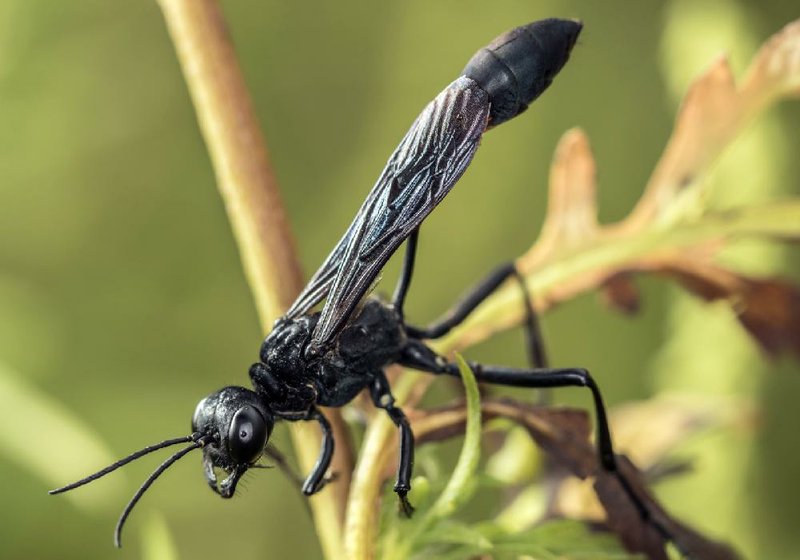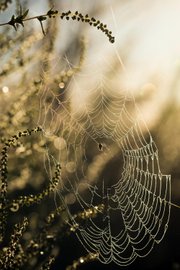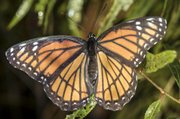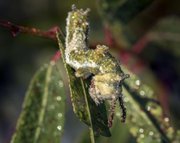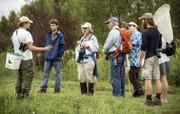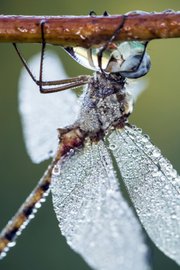FAYETTEVILLE -- Do bug me, man.
That's what dozens of volunteers had in mind when they showed up Sept. 10-11 to look for insects and other creatures in the 46-acre Woolsey Wet Prairie Sanctuary on the west side of Fayetteville. The 24-hour event -- called a bioblitz -- was sponsored by the Isely-Baerg Entomology Club at the University of Arkansas at Fayetteville.
The Woolsey Wet Prairie was established as mitigation for a wastewater treatment plant that opened in 2008. At the time that cattle grazing stopped in 2006, the site had 47 species of plants. But the number of different plant species numbered 431 in late 2013 -- all with no seeding by humans, according to Environmental Consulting Operations Inc., the company overseeing the restoration of the prairie.
The morning of Sept. 10, volunteers set up tents with tables underneath containing scientific equipment such as microscopes. Teams of two people -- one bearing a net and containers, the other with forms on a clipboard -- followed mowed paths through the prairie. Nets, swept through tall flowering plants, yielded creatures including grasshoppers, beetles, butterflies, moths, spiders, katydids and caterpillars. Other insects were caught using stationary traps. Sheet-covered black lights helped reveal night flying insects. The critters were delivered to the experts under the tents for identification. Some specimens were kept and duplicates turned free.
[NAME THAT BUG: Can you recognize the bug shown in each close-up photo?]
The final count? About 600 species. The group found 500 arthropods (such as insects and spiders) and about 20 to 30 vertebrate species (such as snakes, birds and mammals). A less-intense plant survey found 70 to 90 plants.
-- Alyson Hoge
ActiveStyle on 10/10/2016
